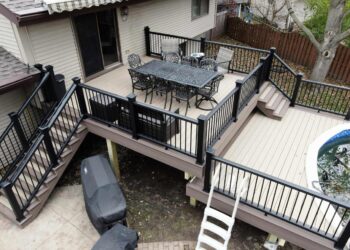Diving into the world of Impact-resistant windows cost, this introduction sets the stage for a detailed exploration of the topic. From understanding the different types available to delving into the factors affecting costs, this overview aims to provide a comprehensive understanding in a structured manner.
As we progress, we will uncover valuable insights into installation costs, maintenance considerations, and long-term benefits associated with Impact-resistant windows cost.
Types of Impact-Resistant Windows

When it comes to impact-resistant windows, there are several types available in the market, each offering unique features and benefits. Let's explore the different types and compare their costs to help you make an informed decision.
Laminated Glass Windows
Laminated glass windows consist of a layer of polyvinyl butyral (PVB) sandwiched between two layers of glass. This design makes the glass less likely to shatter on impact. The benefits of laminated glass windows include improved security, noise reduction, and UV protection.
While they tend to be more expensive than traditional windows, the cost can vary depending on the size and thickness of the glass.
Impact-Resistant Film Windows
Impact-resistant film windows involve applying a thick polyester film to existing windows, providing an extra layer of protection against impact. These windows are a cost-effective way to upgrade your windows without replacing them entirely. The benefits include improved safety, UV protection, and energy efficiency.
The cost of impact-resistant film windows is generally lower compared to other types of impact-resistant windows.
Impact-Resistant Acrylic Windows
Acrylic windows are lightweight and durable, making them a popular choice for impact resistance. These windows are less likely to break on impact and are also resistant to UV rays. The benefits of acrylic windows include energy efficiency, noise reduction, and enhanced security.
While the initial cost of acrylic windows may be higher than traditional windows, they are a long-term investment due to their durability.
Polycarbonate Windows
Polycarbonate windows are extremely strong and impact-resistant, making them ideal for areas prone to severe weather conditions. These windows are lightweight and offer excellent clarity. The benefits of polycarbonate windows include impact resistance, UV protection, and energy efficiency. While the cost of polycarbonate windows may be higher than other types of impact-resistant windows, their durability and strength make them a worthwhile investment.
Factors Affecting the Cost of Impact-Resistant Windows
When considering impact-resistant windows, several factors influence their cost. Understanding these factors can help homeowners make informed decisions when investing in these windows.
Size and Design of Windows
The size and design of impact-resistant windows play a significant role in determining their cost. Larger windows or those with intricate designs may require more materials and labor to manufacture and install, resulting in higher costs. Simple, standard-sized windows are generally more affordable compared to custom-designed or oversized options.
Material Used in Construction
The material used in the construction of impact-resistant windows can also impact their cost. Windows made with high-quality materials such as laminated glass or impact-resistant frames tend to be more expensive upfront but offer better durability and protection against harsh weather conditions.
Opting for premium materials can increase the overall cost of impact-resistant windows, but they provide long-term benefits in terms of safety and energy efficiency.
Installation Costs of Impact-Resistant Windows

When it comes to installing impact-resistant windows, there are several factors to consider that can influence the overall cost. The installation process, labor costs, and any additional expenses play a crucial role in determining the total investment required for these windows.
Typical Installation Process
Installing impact-resistant windows involves several steps to ensure proper fitting and functionality. The process typically includes:
- Removing the existing windows
- Preparing the window openings
- Installing the impact-resistant windows
- Securing the windows in place
- Applying sealant and insulation to prevent air leakage
Labor Costs
The labor costs associated with installing impact-resistant windows can vary depending on factors such as the size of the windows, the complexity of the installation, and the contractor's rates. On average, homeowners can expect to pay between $40 to $75 per hour for professional installation services.
Larger windows or more intricate installations may require additional labor hours, leading to higher overall costs.
Additional Costs
In addition to labor costs, there are other expenses that homeowners should consider when budgeting for impact-resistant windows installation. These may include:
- Permit fees: Some areas require permits for window replacement projects, which can add to the overall cost.
- Disposal fees: Proper disposal of old windows and construction debris may incur additional charges.
- Trim work: If the windows need new trim or finishing touches, this can also contribute to the total installation cost.
- Weatherproofing: Ensuring that the windows are properly sealed and weatherproofed may involve extra materials and labor.
Maintenance and Long-Term Cost Considerations
When considering the overall cost of impact-resistant windows, it is important to factor in maintenance requirements. Proper maintenance can significantly impact the longevity and performance of these windows, ultimately affecting the long-term cost.
Importance of Regular Maintenance
- Regularly inspect the windows for any signs of damage or wear and tear.
- Keep the tracks and hinges clean and lubricated to ensure smooth operation.
- Check the seals and weatherstripping to prevent air leaks and water infiltration.
- Wash the windows with mild soap and water to remove dirt and debris.
Long-Term Cost Benefits
- Investing in impact-resistant windows can lead to savings on insurance premiums due to increased protection against storms and break-ins.
- These windows can also improve energy efficiency, reducing heating and cooling costs over time.
- With proper maintenance, impact-resistant windows can have a longer lifespan, avoiding the need for premature replacement.
Maximizing Lifespan of Impact-Resistant Windows
- Regularly clean and inspect the windows to catch any issues early on.
- Trim any overhanging branches or foliage that could potentially damage the windows during storms.
- Avoid slamming the windows or using excessive force when opening and closing them.
- Consider applying a protective film to minimize scratches and damage from debris.
Closing Summary

In conclusion, Impact-resistant windows cost is not just about the initial investment but also the long-term savings and benefits they offer. By making an informed decision and understanding the key aspects discussed, you can enhance the safety and durability of your windows while optimizing costs in the long run.






